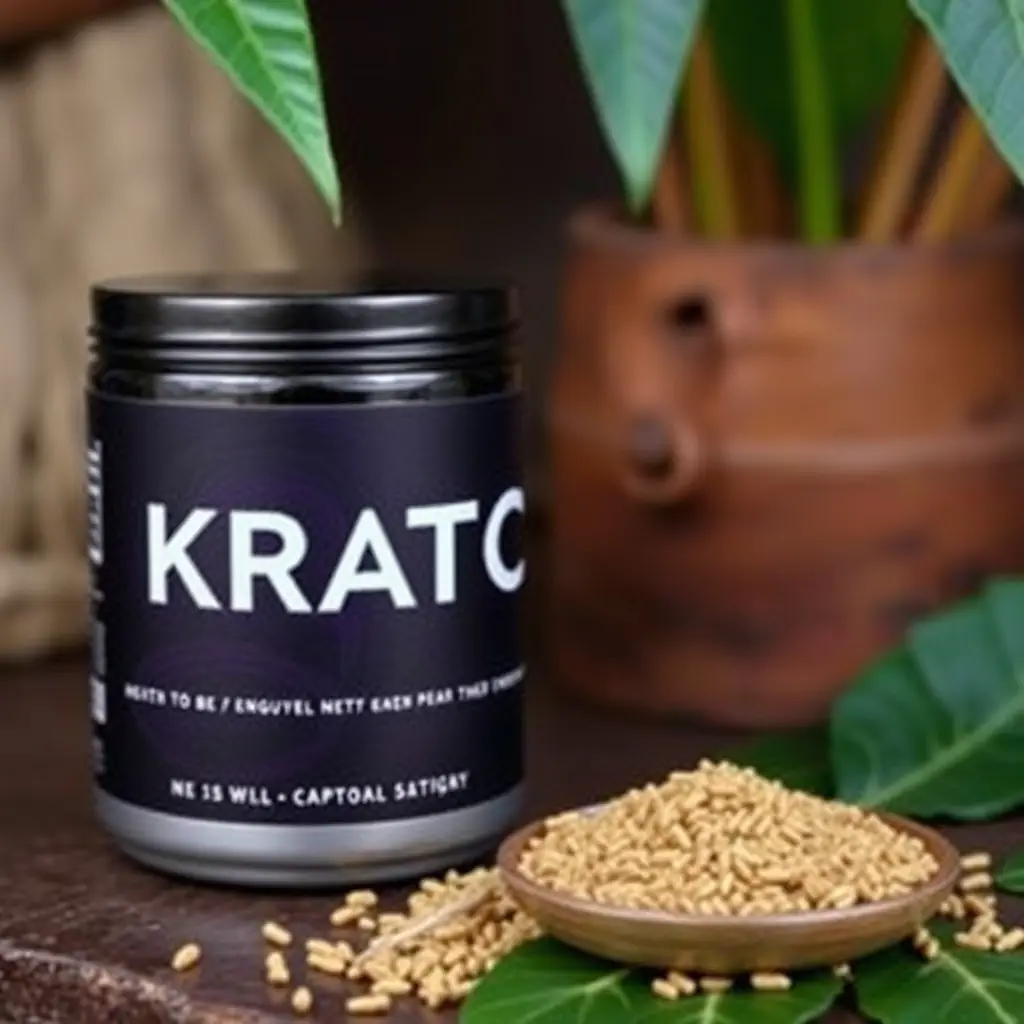Kratom, derived from the Mitragyna speciosa tree, has potential benefits for athletes seeking muscle relaxation, pain relief, and improved mental resilience. Its stimulant and analgesic properties are historically utilized in Southeast Asia and can also enhance energy levels and focus, which may be advantageous during training and competitions. However, the legal status of kratom varies by country and region, making it crucial for athletes to verify its legality when traveling, especially when flying. Athletes must adhere to airline policies, packing kratom in checked luggage and not consuming it on flights. A personalized kratom regimen can be beneficial for recovery, with different strains like Maeng Da for energy and white vein strains for pain relief post-exercise. Coaches play a key role in guiding athletes through the use of kratom, ensuring it aligns with their unique recovery needs and does not negatively affect performance. Proper dosage timing is also vital: a lower dose after exercise can relieve muscle soreness, while a higher dose before competition can boost energy and focus. Athletes must follow expert advice to navigate the complexities of using kratom responsibly, both in their training programs and when traveling, particularly when 'flying with kratom.' It's essential for athletes to work closely with performance coaches to monitor kratom's impact on recovery and performance, ensuring its safe and effective integration into a training regimen.
Exploring the intersection of natural wellness and athletic prowess, this article delves into the transformative potential of kratom in enhancing recovery and performance for athletes. We’ll navigate through understanding kratom’s effects on athletic recovery, crafting a tailored regimen, and integrating it seamlessly into training routines, all while addressing travel considerations like flying with kratom. Join us as we explore this burgeoning field guided by expert coaches who are paving the way for athletes to achieve their peak performance.
- Understanding Kratom's Role in Athletic Recovery and Performance Enhancement: A Guide to Flying with Kratom
- Crafting a Personalized Kratom Regimen for Optimal Athletic Recovery: Tips from Expert Coaches
- Integrating Kratom into Your Training Routine: Strategies for Athletes Seeking Enhanced Recovery and Improved Performance with Kratom
Understanding Kratom's Role in Athletic Recovery and Performance Enhancement: A Guide to Flying with Kratom

When incorporating kratom into an athlete’s recovery regimen, it’s crucial to have a clear understanding of its effects and how it can complement athletic performance. Kratom, derived from the Mitragyna speciosa tree, has been traditionally used in Southeast Asia for its stimulant and analgesic properties. For athletes seeking to optimize their recovery, kratom can play a multifaceted role. It may aid in muscle relaxation, alleviate pain from injuries or overuse, and provide a sense of well-being that supports mental resilience. Additionally, certain strains of kratom are believed to enhance energy levels and focus, which can be beneficial during training sessions or competition.
Navigating the complexities of flying with kratom requires careful consideration of legal restrictions and airline policies. Kratom’s status varies across different countries and regions, making it imperative for travelers to check the legality of possessing and transporting kratom in their destination as well as their point of origin. For those who have a legitimate need for kratom while flying, such as for athletic recovery, it is advisable to consult with the airline ahead of time regarding their regulations on carrying botanical supplements. Packing kratom in checked luggage rather than carry-on can mitigate potential issues at security checkpoints. Moreover, athletes should be aware that consuming kratom products during flight is generally not permitted, as airline policies typically restrict the ingestion of anything other than what is served by the airline itself. Understanding these guidelines ensures a smooth travel experience and helps maintain compliance with both federal aviation regulations and international border control laws.
Crafting a Personalized Kratom Regimen for Optimal Athletic Recovery: Tips from Expert Coaches

Crafting a personalized Kratom regimen tailored to optimize athletic recovery involves careful consideration and expert guidance. Expert coaches specializing in performance enhancement recognize that each athlete’s response to Kratom can vary significantly, influenced by factors such as individual metabolism, the intensity of their training, and their unique physiological makeup. To this end, these coaches emphasize the importance of a bespoke approach to Kratom use, ensuring it aligns with the athlete’s specific recovery needs. For instance, selecting the appropriate Kratom strain—whether it be for pain relief, energy enhancement, or relaxation—is pivotal in supporting recovery without interfering with performance. Coaches also advise athletes on dosage timing, typically suggesting a lower dose post-exercise to aid muscle soreness and a higher dose before a competition to boost energy levels and focus. Additionally, they guide athletes on flying with Kratom, navigating regulations and best practices for transporting this natural supplement across different jurisdictions, ensuring compliance while maintaining the integrity of their recovery regimen. This personalized strategy, supported by expert coaching, can lead to enhanced performance outcomes and a reduced risk of overtraining or injury. When incorporating Kratom into an athletic recovery plan, it is essential to adhere to professional guidance and remain vigilant about monitoring individual responses for the safest and most effective results.
Integrating Kratom into Your Training Routine: Strategies for Athletes Seeking Enhanced Recovery and Improved Performance with Kratom

Athletes are constantly seeking ways to enhance their performance and optimize recovery to maintain peak physical condition. Kratom, a plant-based supplement derived from the leaves of Mitragyna speciosa, has emerged as a potential ally in this pursuit. When integrated into a training routine, kratom can offer multifaceted benefits for athletic recovery, with particular attention to strain selection being crucial for the desired effects. For instance, certain strains like Maeng Da are known for their stimulating properties, which can be beneficial during intense training phases, while white vein strains such as Borneo or Bali are favored post-exercise for their analgesic and mood-elevating effects that aid in recovery and pain management. It’s important to approach kratom with a nuanced understanding of its potential impact on performance; regular dosing should be balanced with rest periods, and athletes must be aware of the legal status of kratom in their jurisdiction before ‘flying with kratom,’ as travel regulations vary by destination.
To effectively incorporate kratom into an athletic regimen, coaches and athletes should collaborate to monitor its effects on both recovery and performance. A tailored approach, considering individual physiology and the specific demands of the sport, will yield the best results. Kratom’s alkaloids, including 7-hydroxmitragynine and mitraphylline, interact with various receptors in the body, potentially offering pain relief, reduced inflammation, and improved mood without the sedative effects associated with opioids. This makes it a versatile tool for athletes looking to enhance their recovery process, provided it is used responsibly and as part of a holistic training program. Coaches trained in the subtleties of kratom can guide athletes through its integration, ensuring that performance enhancement does not come at the cost of health or safety. With careful consideration and professional oversight, kratom has the potential to be an asset in the athletic recovery toolkit.
Athletes seeking to enhance their recovery and performance may find kratom a valuable addition to their regimen, as discussed in this article. By understanding its role, crafting a personalized plan with expert guidance, and integrating it into training routines, athletes can potentially optimize their recovery process. For those who travel, such insights on flying with kratom are particularly useful. This article has provided a comprehensive overview of the nuances involved in using kratom for athletic purposes, ensuring readers have the information needed to make informed decisions about its inclusion in their recovery strategies. As with any supplement, it’s crucial to stay informed on legal considerations and adhere to professional health advice when incorporating kratom into an athletic program.






